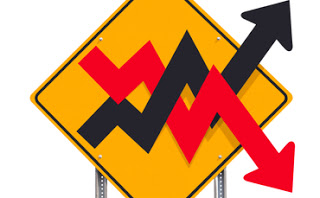
The global capital markets are stabilizing in Europe after continued selling was seen in Asia after the US slide yesterday. The dollar is narrowly mixed against the major currencies. Higher oil and copper prices have helped the helped steady the Australian dollar. After briefly dipping below $0.6940, it recovered to $0.6985 in the European morning. The US dollar recorded new multi-year highs against the Canadian dollar near CAD1.3430, before pulling back to CAD1.3400.
The euro rose to $1.1280 in Asia, and as commodity producers and commodities stabilized, the euro slipped back toward $1.1220 in Europe. The intra-day technicals warn of the risk of another run at $1.1300-$1.1320. The dollar has been tracing out a large symmetrical triangle against the yen since late-August. As we have noted the pattern is 1) mostly seen as a continuation pattern, which in this context is dollar negative and 2) subject to false breaks.
Before the weekend, the dollar broke to the upside, but the close failed to confirm it. Weighed down by sliding equities and lower bond yields, the dollar tested the lower end of the triangle in the JPY119.30 area today, and it held. The dollar has bounced back to trade briefly through JPY120 in the European morning. However, the greenback met new sellers and was pushed back toward JPY119.50 seems likely in North America today.
The news stream is light, and what news there is appears to be overshadowed by a general anxiety spurred by the commodity-equity market link. The splitting of Alcoa (AA), the UK steel plant that announced closure, the performance of some large commodity producers, like Glencore, are worrying investors, and may be exacerbating the quarter-end portfolio adjustments.
There are four developments to note today. First, India’s central bank delivered a larger than expected 50 bp rate cut today. The market had anticipated a 25 bp cut. This was sufficient to spur a recovery in Indian equities. It is also notable that the rupee was not punished by the rate cut.













Leave A Comment